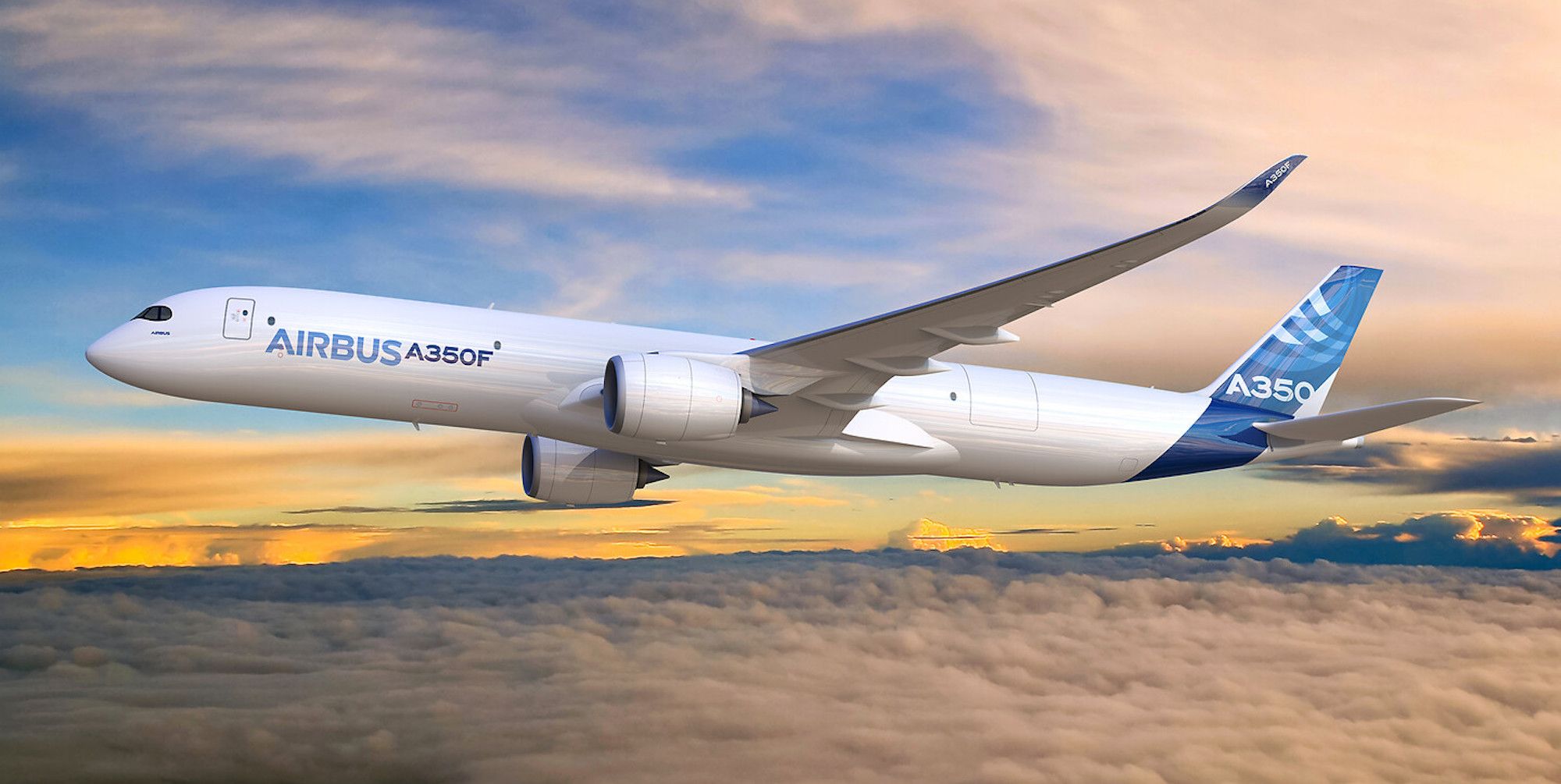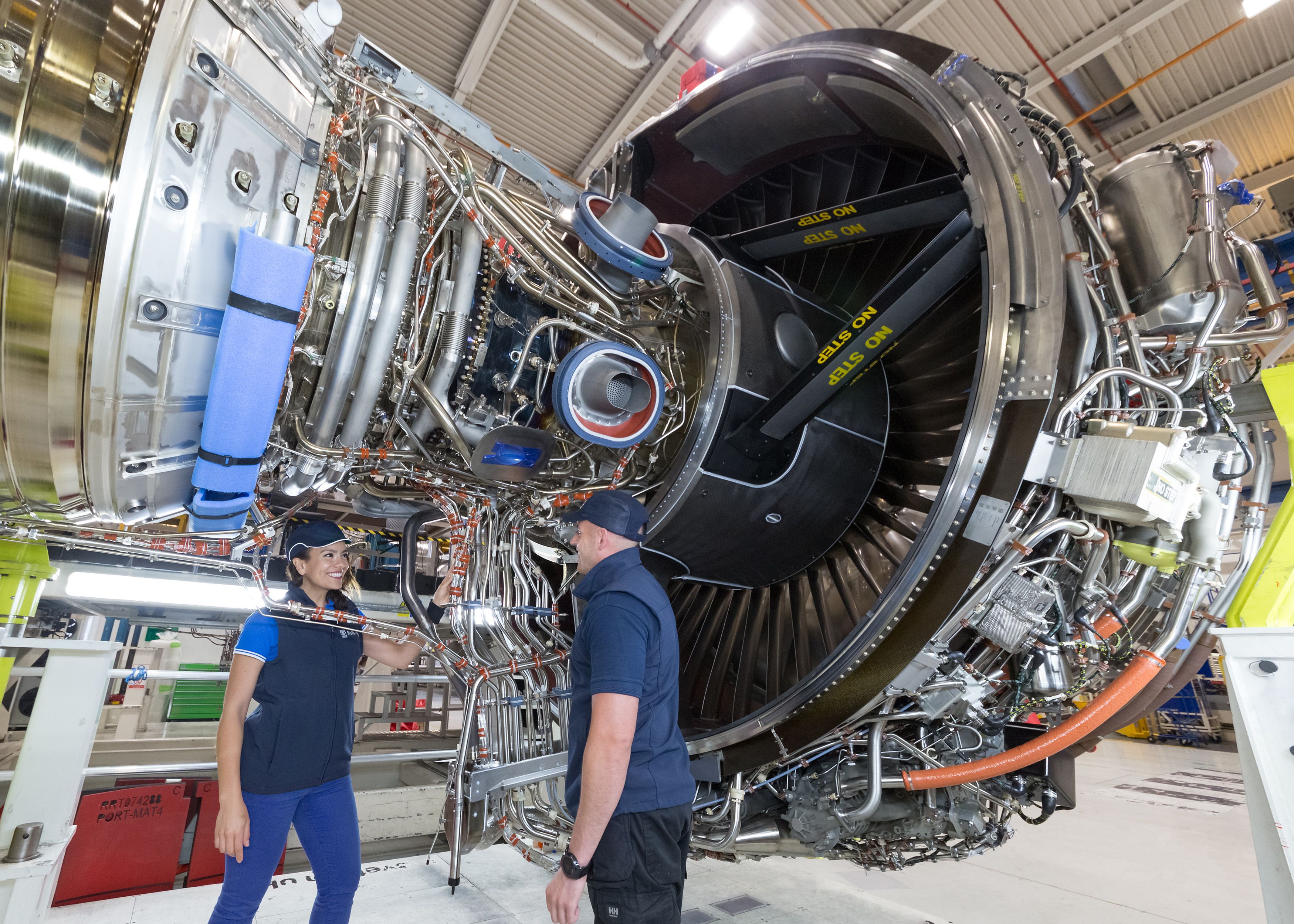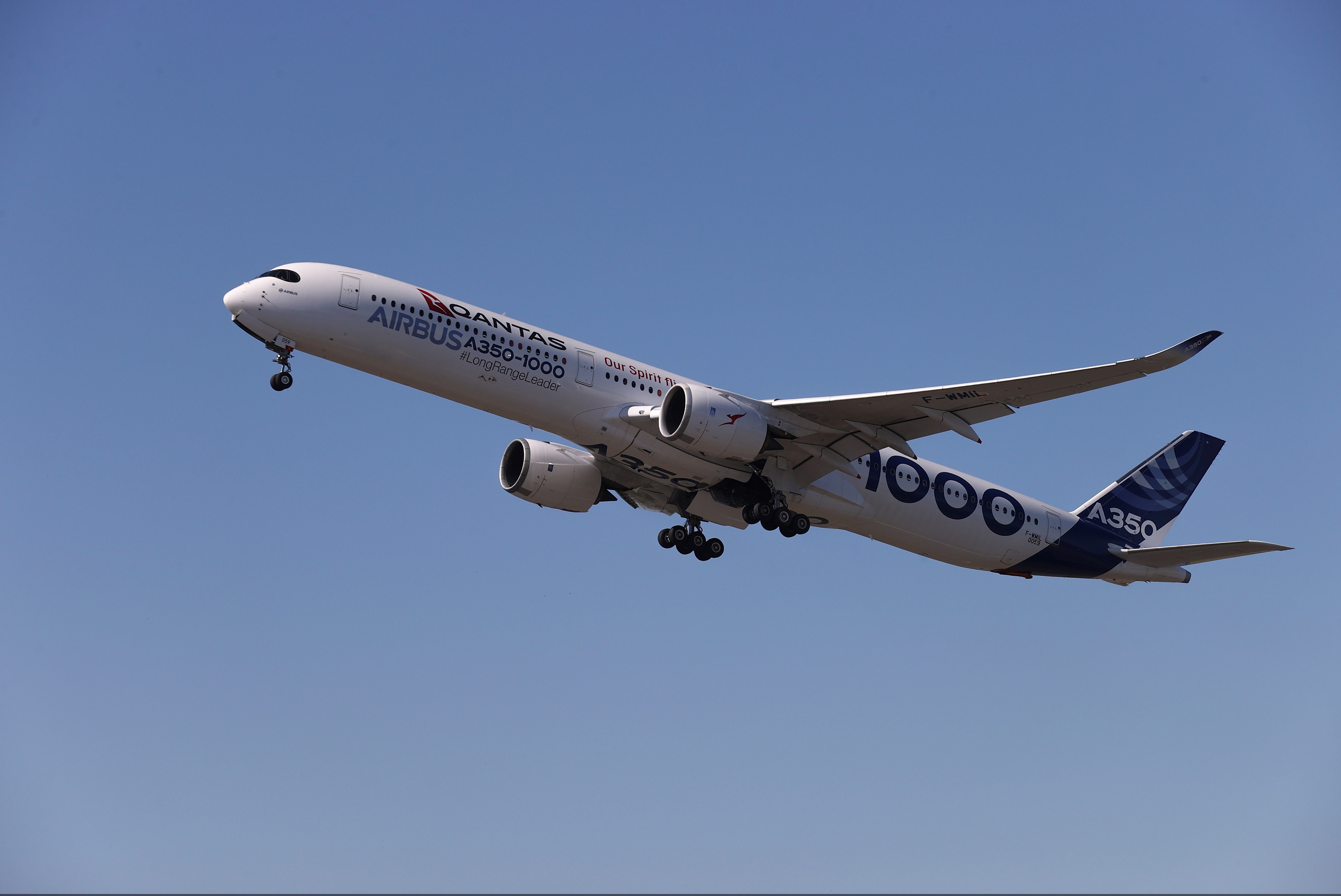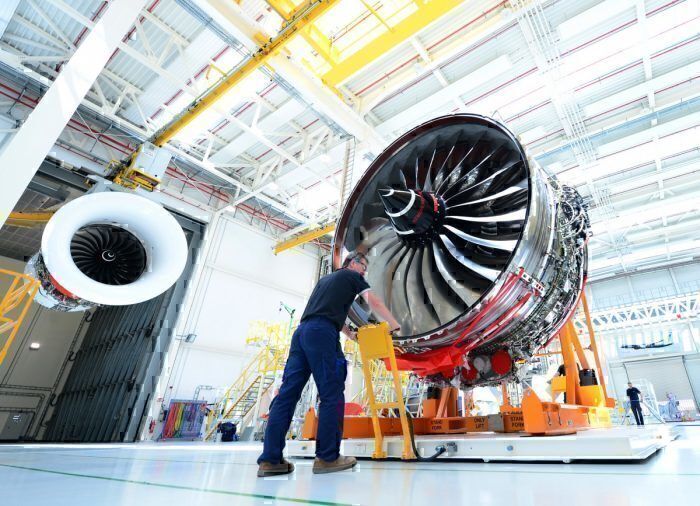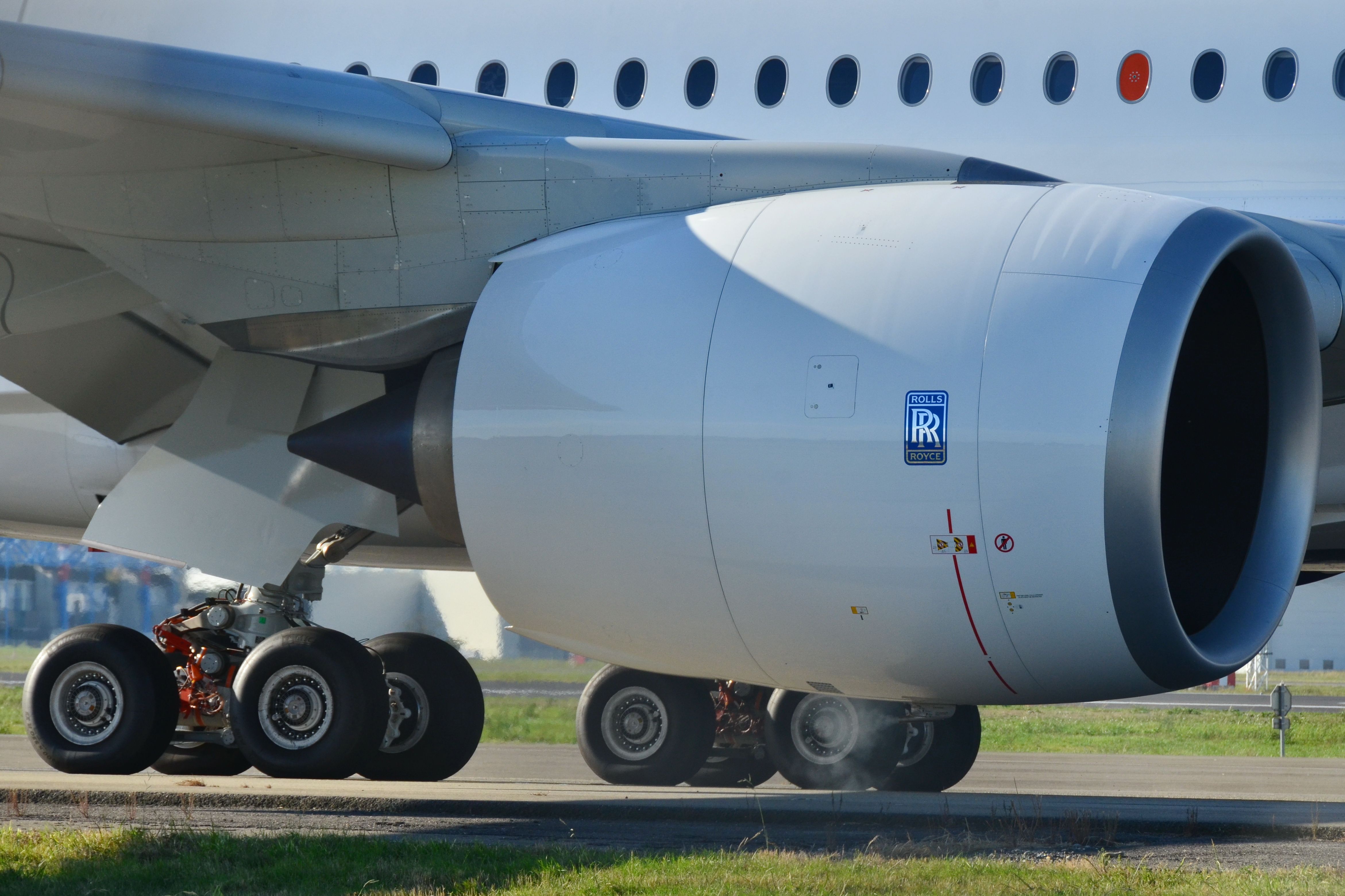Summary
- The Rolls-Royce Trent XWB-97 delivers more thrust for the Airbus A350-1000 and A350F.
- The XWB-97 has advanced technologies for greater payload, range, and optimum performance on long-haul flights.
- Commonality in design and maintenance tasks between XWB-97 and XWB-84 variants ensures pilot familiarity and operational efficiency.
Rolls-Royce’s Trent XWB is one of the industry’s most efficient widebody engines, exclusive to the Airbus A350 family. Airbus currently offers two major variants of its A350 family aircraft – the shorter A350-900 and the stretched A350-1000. Two Trent XWB-84 (84,200 lbf / 374.5 kN) turbofans power the -900 variant, while Rolls-Royce introduced a more powerful version, the XWB-97 (97,000 lbf / 431.5 kN), to power both the A350-1000 and the A350F cargo variant.
The Trent XWB-97 is not just an upgraded version of the XWB-84 and requires greater development, testing, and proving. While the -97 has many attributes similar to -84, some advanced technologies it employs to produce comparatively extra thrust and optimum aircraft performance are also very different. Rolls-Royce significantly improved the XWB-97’s design, systems, and functionalities to make it capable of handling a greater payload and range than the Airbus A350-900.
XWB-97 for the Airbus A350F
Airbus plans to use the XWB-97 engine on the A350F to offer greater payload and range than competitors. According to Airbus,
“Based on the A350 programme, the A350F delivers more payload, more range and more volume compared to the 777F, all comforting its position as the only future-proof choice for operators today. With equal volume as the 747F, +3t more payload compared to the 777F, and offering more range, the A350F delivers robust capabilities to ensure continuity for your operations.”
Airbus aims to offer its cargo customers a payload capacity of up to 109 tonnes over a range of 4,700 NM (8,700 km) through the A350F. Unveiled in July 2021, the A350F is expected to enter service in 2025.
Commonality between variants
From the operator’s perspective, the XWB-97 is deliberately designed to have very little visible difference so that the pilots’ flying experience is the same. The Trent XWB family maintains the shape and size of the nacelle across both existing variants. This commonality makes operational and maintenance tasks compatible between the lower and higher thrust variants.
Photo: Rolls-Royce
Moreover, from the maintenance point of view, 80% of the replacement line items and tools are identical between the two variants. However, advanced technologies employed on the XWB-97 provide the extra thrust and optimum aircraft performance for the A350-1000 and A350F.
The versatility of the XWB-97
Currently powering the A350-1000, the Trent XWB-97 caters to a wide range of short-haul and long-haul missions. Today, flights of as little as 45 minutes and as long as 16 hours are safely and efficiently powered by the XWB-97. The Trent XWB utilizes cutting-edge design and advanced technologies, resulting in reliability, versatility, and unique range capacity.
Photo: Airbus
Rolls-Royce Trent XWB-97 engines are behind what will be the world’s longest scheduled passenger flights between Sydney (SYD) and London Heathrow (LHR). Qantas’ Project Sunrise flights from Australia to New York and London onboard A350-1000s will last around 20 hours.
Fan and core improvements
Though the fan diameter and the number of blades are shared between both variants, the fan of the -97 runs 6% faster than the -84. This will inject more air into the inlet. The engine core has been sized up to cope with the increased airflow from the gigantic fan inlet. Increased airflow in the core also means more work for the combustion chamber in homogenizing the air-fuel mixture and igniting it.
Photo: Rolls-Royce
The combustor on the XWB-97 has been strengthened to increase its temperature capability. A healthy jet engine running near maximum thrust levels experiences approximately 3,000 degrees F (1,700 degrees C) in the hot section. Advanced metal alloys and ceramic-matrix composites (CMCs) used in the combustor resist high temperatures while maintaining engine efficiency.
According to Simon Burr, the COO for Civil Large Engines at Rolls-Royce,
“The Trent XWB-97 will be the highest thrust engine we have ever certified, the highest operating temperatures and the most advanced cooling systems we have ever designed in a civil engine. We are working at the leading edge of technology, but that is what you do to produce the world’s most efficient engines.”
Rolls-Royce incorporates a broader use of blisks (combined bladed disks) across the high-pressure and intermediate compressors on the -97. A blisk consists of a single part connecting the disk and rotating blades through additive manufacturing, integral casting, or simply welding individual blades to a rotor disk. Blisks minimize drag and improve aerodynamic efficiency while reducing weight over conventional assemblies.
The first stage intermediate compressor blisk of the Trent XWB-97 is the largest Rolls-Royce has produced on a commercial engine. They claim that it achieves module weight savings of 15% by using compressor blisk technology.
Turbine section improvements
Turbine sections are strengthened with temperature-resistant materials to ensure a streamlined flow of hot gasses during expansion. Greater temperatures in turbine sections require efficient cooling systems. Cooling ducts, valves, and passages have been improved to facilitate efficient cooling.
For example, modern jet engines, such as the Trent XWB-97, use various cooling means in the turbine section. These include internal cooling, impingement cooling, and film (thermal barrier) cooling. Multiple mechanisms allow turbine blades to maintain temperatures below critical, minimize wear, and perform optimally.
The thermal efficiency of the high-pressure turbine is significantly improved through the use of advanced materials and coating techniques. According to Simon Burr,
“To get the performance and efficiency from this machine we need to grow the turbine temperature capability to a level higher than we have with any large aero engine in the past. Maintaining thermal efficiency at those higher temperatures is critical, so we’ve invested in new materials and coatings for the high-pressure turbine blades but also employed an intelligent cooling system that provides the right amount of cooling air to the blade throughout the flight cycle.”
The use of additive manufacturing techniques used on the -97 offers design freedom while minimizing lead time compared to conventional machining or casting techniques. For example, the ring of vanes from the inlet to the engine core is produced through additive manufacturing.
The ring provides a series of complex internal passages that transfer (relatively) warm air used by the anti-icing system. Warm air circulation in internal paths and passages protects the engine during adverse weather conditions. Using advanced materials and technologies, the XWB-97 delivers world-leading operational performance and on-wing reliability.
